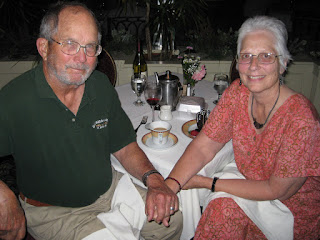Linda and Carolyn in Vancouver
I was lucky to have been along
According to the Tea Party, guys like John McCain are
RINOs. This translates as Republican In
Name Only. John – and many other
relatively conservative public figures – acquire this designation because they
are willing to compromise on occasion, to get things done. Well, this blog is about DINOs. These are not about Democrats In Name Only,
as you might deduce. (How about Bill
Clinton in the 1990s, compromising on welfare reform and free trade?) No, as used here, DINO is an RNA molecule
that plays a crucial role in the biochemical cascade that enables the
tumor-suppressor protein p53 to do its job.
In over half of all cancers, p53 is disabled. Fooling around with the DINO (Damage Induced
NOncoding) RNA, Stanford researchers have determined that p53 can be brought
back from the dead and induced to do its job.
Early times, of course, but there is reason to hope. In the immediate future many mice will die
and many grant applications will be submitted, but I am optimistic.
https://www.cancer.gov/news-events/cancer-currents-blog/2016/dino-p53?cid=eb_govdel
https://www.cancer.gov/news-events/cancer-currents-blog/2016/dino-p53?cid=eb_govdel



